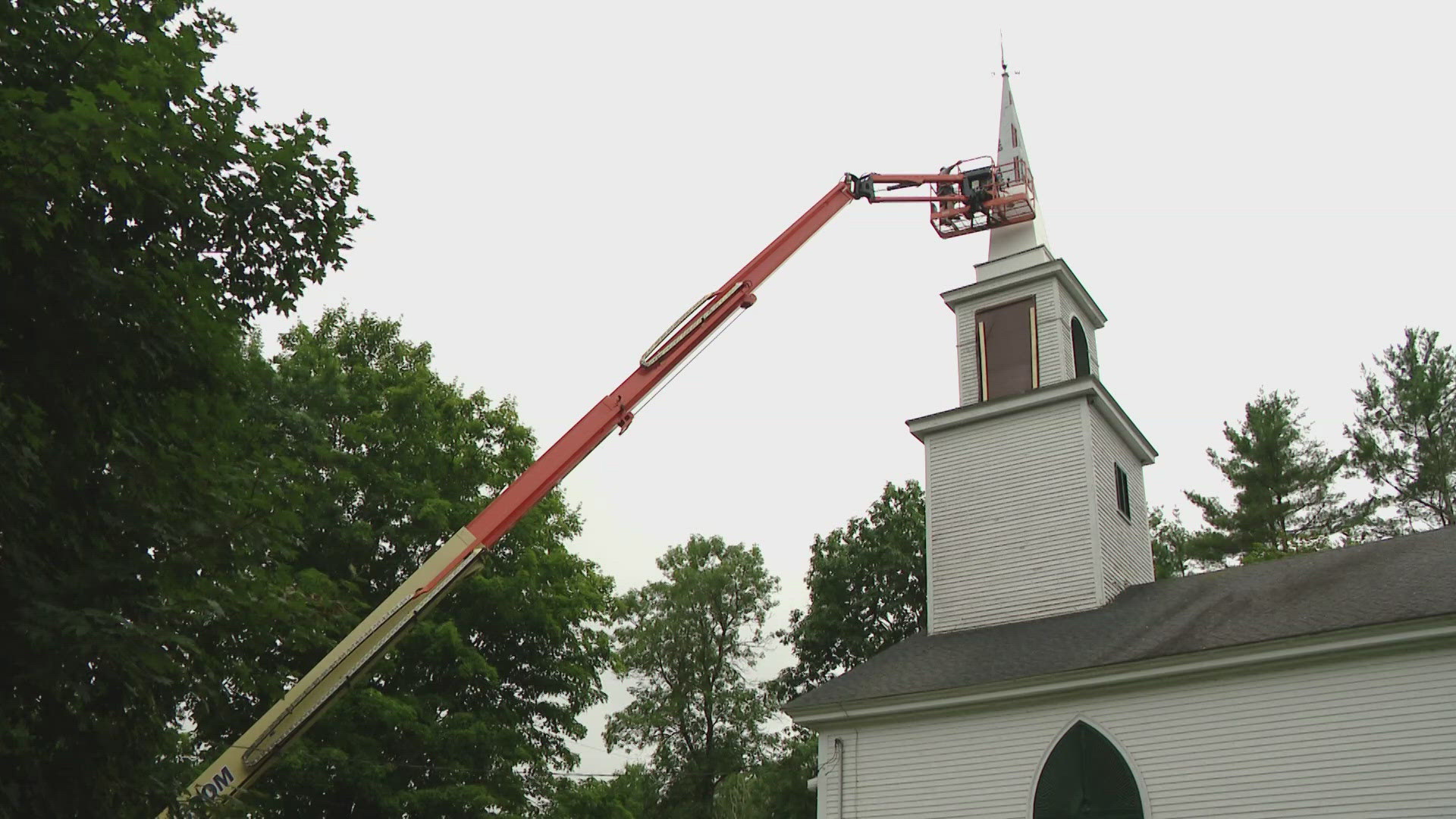ALNA, Maine — Drive to just about any Maine town, and you’ll see a church steeple. Over the past two centuries, those typically white spires, pointing worshipers toward Heaven, have become treasured parts of the local landscape.
The church at Head Tide village in Alna, with its unusual steeple featuring a central spire and four smaller, corner spires with a connecting fence, has been a landmark for over 180 years.
In the 1930s, the church was painted by noted artist Marsden Hartley. The photos of the church graced postcards in the 1940s and ’50s.
Later, Andrew Wyeth and his artist son Jamie Wyeth both created paintings of the Head Tide church.
“I think it's such an iconic part of our view scape in Alna,” Mary Bowers, head of the maintenance committee for the church, said.
That team and others in the village have faced plenty of challenges over the years to keep the Head Tide church the landmark it is. Their work may be symbolic of the challenges faced by hundreds of congregations and communities across Maine and New England.
The Head Tide church was built in 1838, at a time when the little village on the Sheepscot River was growing. Mills were being built and more houses as well. The church was built on a hill, looking over the river and the village and the farm fields beyond. Through the Civil War, the Great Depression, World War I and World War II, as well as the ups and downs of the local community the church, with its signature spire, has been part of the life of people in Alna.
But in 1962, the church was hit by lightning. The roof burned and the steeple collapsed.
“The Paul Revere bell fell and broke into pieces,” Bowers said.
The bottom of that bell, now in two heavy pieces, still sits in the church entry.
But the church congregation and others helped to rebuild. A new steeple, modeled after the old one, was built to replace it. When the church organization ceased operating more than 20 years ago, the town took ownership of the building. Bowers and a number of other local volunteers have taken on the obligation of caring for their historic building.
Two years ago, a neighbor of the church spotted a hole in the spire. An inspection showed rot had set in. Mary Fossel, who leads the fundraising committee, said all agreed they had to rebuild it.
“The whole committee decided there was no question here, we had to do it.”
They raised $80,000 in donations, with about half coming from the Maine Steeple Fund, a nonprofit created about 15 years ago for the exact purpose of saving the state’s old churches.
There was also a donation from local taxpayers, church neighbor and volunteer Brett Donham said.
“We asked for money on the town meeting floor, and someone stood up and said I vote we increase the amount of money. You could have knocked me over with a feather!”
That, the volunteers say, was proof positive that local people love their old church.
“If you look around at some of the pews, you find carvings and people’s names penciled in. And you can imagine what it must have been like to walk up the hill and come to a service here,” says May Mitchell, a volunteer fundraiser.
Steeplejack Andrew Wilcox took down the old spire and steeple-top fence, built replacement parts in his shop and then put it all back together and applied finished coats of paint.
Sealing out the weather is crucial, he said.
“If they keep the paint on it that’s a good indication it's probably in good shape,” Wilcox said.
The inside of the Head Tide church has also been cared for over the years, with plaster repaired as needed and the walls and ceiling painted. Sitting inside the church, with the boxed-in pews that local families paid for when it was built, the old church looks much the same as it always did, despite the passage of nearly 200 years.
But keeping this piece of Alna's history also means finding ways for people to see it and use it, so future generations will continue to cherish it.
Using it is key, Donham said.
“Old buildings if they’re left empty are gonna die, and we need to find new uses and expose them to new people, and they need to be living buildings, not dead buildings.”

